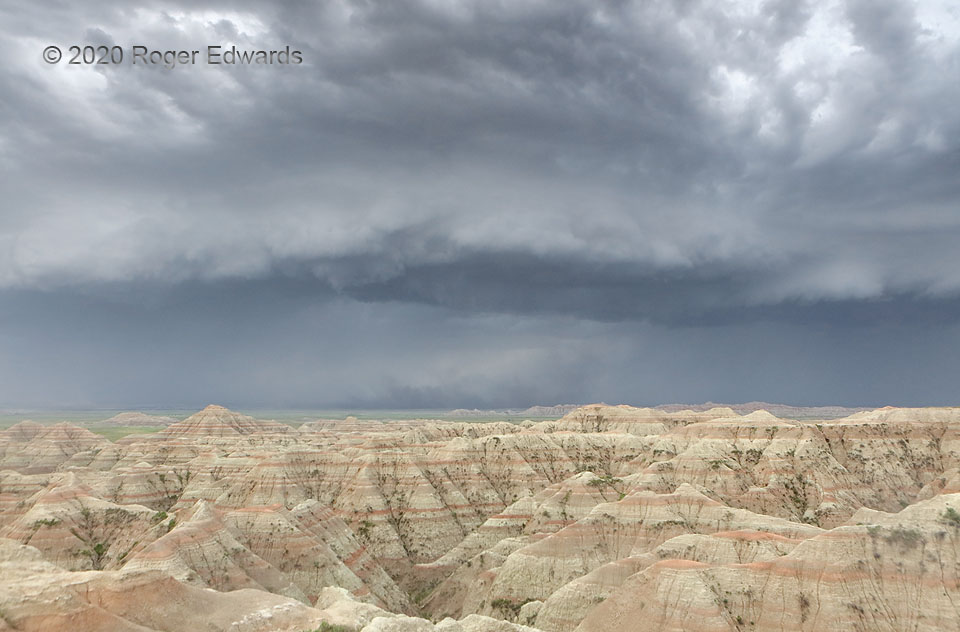[Part 1 of 2] Aside from being set in wondrously scenic geology, this image now stands as a piece of major weather history. Earlier in the afternoon, I had been positioned in western South Dakota, north of Sturgis, in the event any supercells could develop ahead of a line of thunderstorms that yielded severe wind in the central Rockies for hours. A 110-mph gust report buzzed off the weather wire from Winter Park, CO, so I knew the expansive storm complex meant serious business. With discrete-supercell potential diminishing, and knowing a phenomenal wall of wind was approaching from Wyoming, I wheeled southeast and set up on a high Badlands ridge for observation and photography of its approach. With over half an hour to spare, I parked nearby and pointed southwest toward the oncoming blast, deliberately located where no upstream debris could be generated, except small vegetation pieces, dirt and grit. I could dart back in less than a minute, and soon would need to! From a safe distance, I also warned several tourists that a very severe windstorm was coming, and they needed to find shelter. The downburst beginning across the basin, at lower middle, was part of a slowly rotating, line-embedded vortex. The dust “below” it was in the circulation’s downdraft, which was fanning out left on the left side, toward me in the middle, and to the right on the right side. The dust never tightened into a closed circulation at ground level. Note the clearing behind it compared to the precip cores either side. The feature would hit just a couple minutes later, embedded in convective system itself traveling around 60 mph. [Go to Part 2]
4 NW Interior SD (6 Jun 20) Looking SW
43.7883, -102.0323
